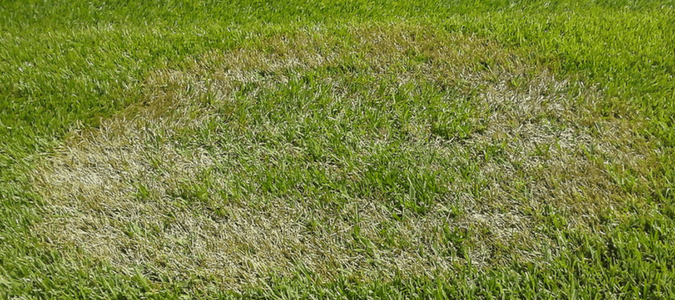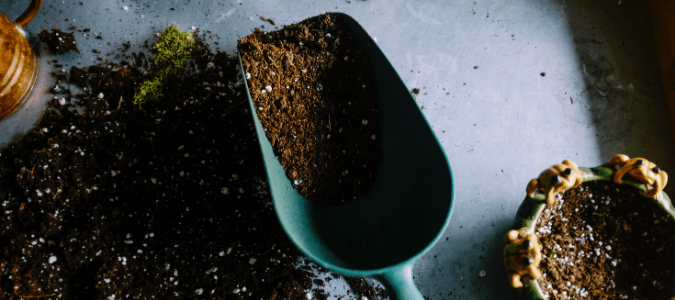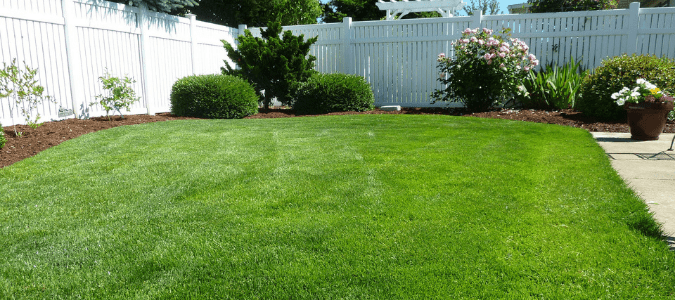Adding fertilizer to your lawn gives it an extra boost, helping it stay healthy so it can establish a good root system. A solid root system protects the lawn from foot traffic, mowing and weather extremes. All plants—including the grass that makes up your lawn—use a lot of energy to not only establish roots but also to grow naturally. Fertilizer can help your lawn in all of these processes.
As with anything else, you can use too much fertilizer, so you should take steps to ensure you are applying the correct type and amount for your lawn’s needs. Fertilizer can be made of a number of things, from synthetic compounds to a variety of composted manures. When shopping for the right type, check the bag. It will have three numbers on the label, listed as # – # – #. Each number on the packaging represents the fertilizer’s percentage of three things: nitrogen, phosphorus and potassium. Your lawn uses all three of these micronutrients in large amounts to stay at peak health.
Take the Test First
Taking a guess as to which kind of fertilizer would work best with your lawn gives you a good chance of actually harming your lawn. A lawn professional can help you determine which one will work for your exact situation by performing a soil test. The test will show you if your lawn is deficient in any of the three main nutrients so you can find a fertilizer to supplement one or more that might be below optimum levels.
Adding too much of one nutrient can damage your lawn. Fertilizer is basically a salt, and when you add too much, it can inhibit the roots in your lawn from absorbing the water needed for healthy growth. We have all seen lawns with discolorations or yellow spots that look like they are scorched. Too much fertilizer is likely the culprit. That is why it is so important to test your soil before applying any product to the lawn.
You don’t have to test every year, but a good rule of thumb is to test it every couple of years to be sure you aren’t adding too much nitrogen, phosphorus or potassium. Such testing will also indicate how many pounds of fertilizer will be needed for your particular space. If you aren’t sure what the numbers from the soil test mean or exactly how to use them to get the right products, talk to a lawn professional. They will be happy to help you get that healthy lawn every homeowner wants!
Organic versus Synthetic
Even with the proper nutrient balance, not all fertilizers work the same way. Organic varieties have nutrients bound in carbon, which means that it takes longer for them to soak into the roots and be usable for your grass.
Granular synthetic fertilizers push out the nutrients right away, but again, you run the risk of burning the lawn if you use the wrong mixture or too much at once. Talk to your lawn expert before you make a final choice on which fertilizer will work best for your needs. They can also help you with questions like, should I use topsoil or compost?
Lawn Fertilizer Schedule
Some people fertilize their lawn once a year, but the best schedule depends on your climate, soil condition and other factors. A regular, consistent fertilizing plan will give you a lawn that always looks its best, maintaining healthy roots and a lush color. A good fertilizing schedule can help guarantee you’ll have a green lawn even in summer heat.
For the best results, fertilizing is recommended about four times a year: early spring, late spring, summer and fall. Start in the spring, right about when your grass is ready to mow for the first time that season. Wait until the lawn looks about halfway green before you add that first layer. If you fertilize before that time, you are just wasting fertilizer as it won’t reach the roots.
Fertilizing in late spring gives your grass a boost before the hot summer sun takes over. After a season of sun and fun, the lawn will need a refresh of nutrients from fertilizer so it can stay green and healthy. And applying fertilizer in the fall will protect your lawn as it settles in for the dormant season. A professional can advise you on the best lawn fertilizing schedule.
Does Fertilizer Go Bad?
If you have a few bags of fertilizer in your shed, how long is it okay to use? In general, it doesn’t spoil. The products are best used between one to four years after purchase, though the fertilizer will still work after that. It just might have a bit of a reduced potency. Liquid fertilizer is still good for about 10 years in storage.
To keep your fertilizer at peak power, store it in a dry, cool, fully shaded spot. Don’t pack it in another container; leave it in the original packaging so you know exactly what it is. Be sure to close the bag or other container completely so moisture can’t get inside, and keep the fertilizer off the ground and away from food. Your garage or a shed is a great spot to keep it until you need it.
If you find that your granular fertilizer has clumped up in storage, don’t be too worried. It will still be effective. When humidity rises, this kind of fertilizer will absorb the moisture and that will cause the particles to bond. That will cause the clumps. You can break them up before applying to your lawn and it will be fine. If you live in a humid area, you should store your fertilizer in a closed bag or in a sealed plastic container to try to keep it from clumping.
If you are storing liquid fertilizer, you might find that the solids have settled to the bottom of the storage container after a while. That isn’t a concern. Just shake it up and then it’s ready to go.
It is important to maintain a regular fertilizing schedule in order to keep your lawn healthy and looking its best. A professional lawn care technician can set up an effective lawn care schedule and make sure that your lawn gets the care it needs throughout the year.
ABC Can Keep Your Lawn Healthy
There is a lot that goes into maintaining a happy, healthy lawn. Instead of spending your spare time working on your lawn, contact ABC Home & Commercial Services. Our lawn care team can create a lawn fertilization schedule that keeps your lawn lush and green.



